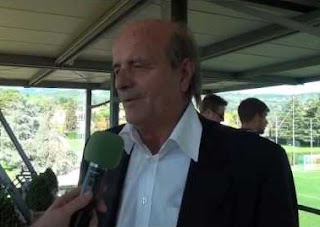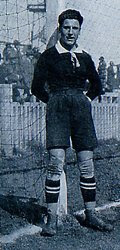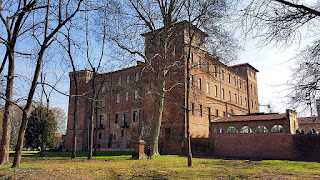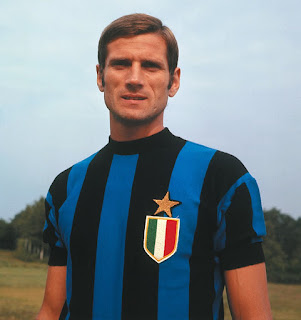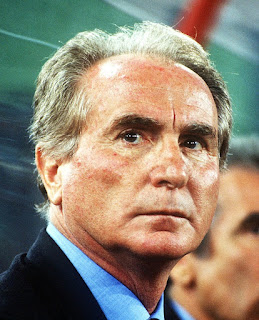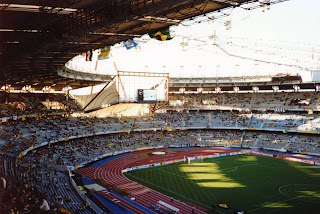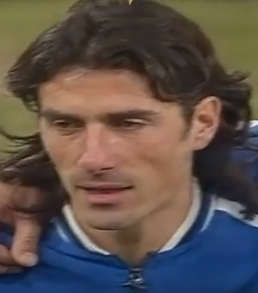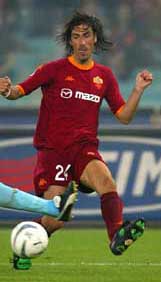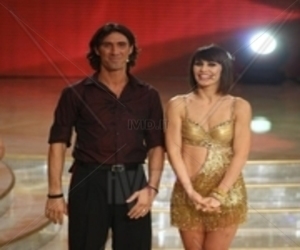Italy’s second all-time highest try scorer
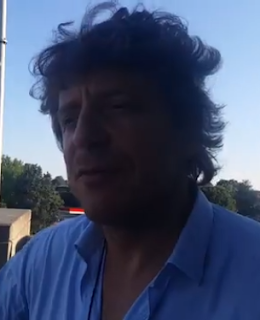 |
| Paolo Vaccari played 64 times for the Italian national rugby team, scoring 22 tries |
A versatile back equally adept at wing, centre or full-back, Vaccari was regarded as a strong defender and an intelligent and technically-sound back who frequently created scoring opportunities for players around him.
Although he was good enough to be selected for the renowned Barbarians invitational XV against Leicester Tigers in 1998, he played all his domestic rugby in Italy, enjoying great success.
He won the double of Italian Championship and Cup with Milan Rugby in 1994-95 and was a title-winner for the second time with his home club Calvisano 10 years later, during a run in which Calvisano reached the Championship final six years in a row, from 2001-06.
Vaccari had won his second Italian Cup medal with Calvisano in 2003-04.
In international rugby, his proudest moment was undoubtedly scoring Italy’s fourth try in their historic 40-32 victory over reigning Five Nations champions France in the final of the FIRA Cup in Grenoble in 1997.
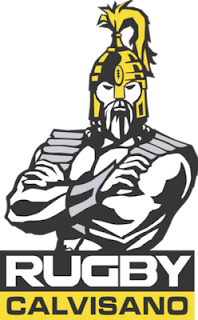 |
| Vaccari's father was one of the founders of Calvisano's rugby club |
He had also participated in Italy’s first victory over a British team, in a warm-up match for the 1995 World Cup, when the azzurri defeated Ireland in Treviso.
Injury caused him to miss Italy’s first match in the Six Nations, against Scotland in Rome in 2000, but he was present to contribute to another historic victory against Wales - their first against the Dragons - in Rome in the 2003 tournament. He retired from international rugby the same year. Only Marcello Cuttitta, another winger, has scored more tries for Italy.
As a native of Calvisano, Vaccari was destined to become a rugby player. The agricultural town in the flat Po plain has become a stronghold of Italian rugby, their team winning the Italian Championship six times.
His father was Gianluigi Vaccari, who along with Alfredo Gavazzi and Tonino Montanari founded the Calvisano club in 1970.
Paolo began to play with the oval ball virtually as soon as he could walk, dreaming of wearing the yellow and black jersey of the Calvisano team.
 |
| Vaccari scored in Italy's historic victory over France in the 1997 FIRA Cup in Grenoble |
He became adept so quickly that his coach pitched him into a competitive junior match a year before he reached 13 years old - the minimum legal age - by picking him under the name of another player who was the correct age. Vaccari’s first-team debut came in February 1987 - two weeks after his 16th birthday.
He made his international debut in the summer of 1991 as Italy toured Namibia and was selected for the first of his three Rugby World Cups the same year, scoring a try in a 30-9 victory over the United States and playing at historic Twickenham for the first time as Italy lost 36-6 to a strong England team, before taking part in a creditable azzurri performance against the formidable New Zealand All Blacks, who came out 31-21 winners.
In 1993, after six years in Calvisano’s first XV, Vaccari joined Amatori Milano - then owned by media magnate, AC Milan owner and future prime minister Silvio Berlusconi and playing as Milan Rugby.
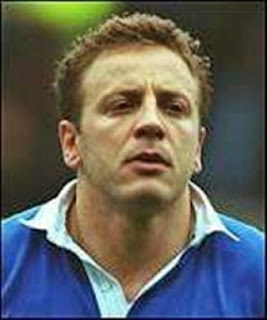 |
| Vaccari helped Calvisano win the Italian Championship for the first time in 2005 |
Vaccari subsequently received offers to play club rugby in South Africa but declined, partially because by then he was studying at the Politecnico di Milano and did not want to abandon his studies.
Instead, he returned in 1995 to his home club, Calvisano, where he would play for the remainder of his career.
As a member of the team that won Calvisano’s first Italian Championship in 2004-05 on their fourth consecutive appearance in the final, defeating Benetton Treviso, he remains a club legend.
Nowadays, a qualified architect, Vaccari is a member of the council of the Italian Rugby Federation.
Married to Azzurra and the father of two children - Martina and Leonardo - Vaccari is a vintage car enthusiast. In fact, he took part in the 2011 edition of the Mille Miglia, once a major endurance event in motor racing but now a festival of classic and vintage cars.
 |
| One of the gates that remain from Calvisano's historic military fortifications |
Calvisano, a town of around 8,500 residents which has roots in Roman times, was something of a military stronghold in the 14th century, when it figured in the struggle between the warring Guelphs and the Ghibellines, who took shelter from their enemies in the town’s castle. In the first half of the 15th century, it became drawn into another fight between rival families as the Visconti and Serenissima battled for the control of the territory corresponding to the current province of Brescia. Parts of the original fortification remain, including two gates, one to the north and the other to the south. The latter, adjoining Piazza Caduti, is surmounted by the Torre Civica.
Find a hotel in Calvisano with tripadvisor
 |
| Treviso is a city of canals, although on a somewhat smaller scale than Venice |
Treviso, another major centre for rugby in Italy, is known to many visitors to Italy as the ‘second’ airport of Venice, yet it is an attractive city worth visiting in its own right, rebuilt and faithfully restored after the damage suffered in two world wars. Canals are a feature of the urban landscape – not on the scale of Venice but significant nonetheless – and the Sile river blesses the city with another stretch of attractive waterway, lined with weeping willows. The arcaded streets have an air of refinement and prosperity and there are plenty of restaurants, as well as bars serving prosecco from a number of vineyards. The prime growing area for prosecco grapes in Valdobbiadene is only 40km (25 miles) away to the northeast.
More reading:
Andrea lo Cicero - rugby star turned TV presenter
Flavio Briatore - the entrepreneur behind the Benetton brand
Brescia's finest sportsman? - the AC Milan and Italy great Franco Baresi
Also on this day:
1623: The death of Venetian historian and statesman Paolo Sarpi
1926: The death of classic Neapolitan songwriter Giambattista De Curtis
1935: The birth of football coach Gigi Radice
Home



